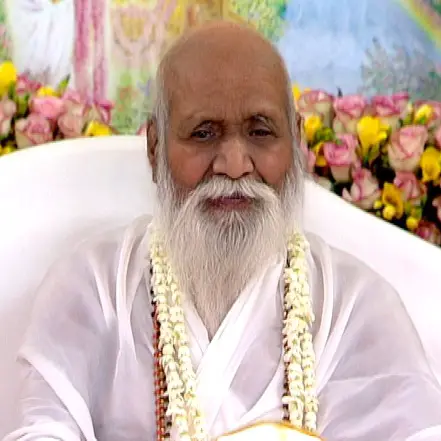In the vast expanse of spiritual practices that humanity has explored over millennia, mantras stand out as a profound tool for transformation, healing, and the manifestation of what many would call miracles. This ancient practice, found in various forms across cultures and spiritual traditions, involves the repetitive chanting or silent meditation on sacred sounds, words, or phrases believed to have a profound effect on the individual’s consciousness and reality. This article delves into the mystical world of mantras, exploring their history, significance, and the miraculous power they hold as reported by practitioners from diverse backgrounds.
We will begin by understanding the role of faith and patience in the journey of mantra practice, recognizing that these virtues are indispensable in cultivating a fertile ground for miracles to occur. Following this, we will explore the rich tapestry of mantras across different cultures, highlighting how these sacred sounds serve as universal bridges between the human and the divine. Moreover, we will provide examples of powerful mantras renowned for their ability to bring about profound changes and miracles in people’s lives.
Whether you are a seasoned practitioner or new to the concept of mantras, this article aims to offer a comprehensive overview that inspires, informs, and invites you into the transformative power of mantra practice. Join us as we embark on this enlightening journey, discovering how mantras can unlock doors to deeper spiritual insights, personal growth, and miraculous manifestations.

Table of Contents
Top Mantras for Experiencing Miracles
In the journey towards manifesting miracles in our lives, mantras stand as powerful tools that transcend mere words, embodying vibrations that can alter our consciousness and reality. Here are some of the most potent mantras known for their miraculous capabilities.
Gayatri Mantra The Gayatri Mantra is one of the oldest and most powerful of Sanskrit mantras. It is believed to invoke universal wisdom and enlightenment, offering protection and leading the practitioner towards a path of righteousness.
Maha Mrityunjaya Mantra The Maha Mrityunjaya Mantra is a powerful chant dedicated to Lord Shiva, known as the conqueror of death. It is said to bestow longevity, ward off calamities, and bring about healing and rejuvenation.
Om Mani Padme Hum This mantra is the heart of Tibetan Buddhism, embodying the essence of compassion and wisdom. It is said that chanting this mantra purifies the heart, mind, and body, helping the practitioner to cultivate a compassionate and enlightened mind. The mantra translates to “the jewel is in the lotus,” symbolizing the potential for purity and enlightenment within us all.
So Hum “So Hum,” meaning “I am That,” is a simple yet profound mantra that aligns the practitioner with the universe’s rhythm, promoting a deep sense of connection and unity. It is a powerful tool for meditation, helping to focus the mind and bring about a state of awareness and inner peace. This mantra serves as a reminder of our true nature and our connection to the universal consciousness.
Lokah Samastah Sukhino Bhavantu This Sanskrit mantra is a heartfelt appeal for universal peace and happiness. It translates to “May all beings everywhere be happy and free, and may the thoughts, words, and actions of my own life contribute in some way to that happiness and to that freedom for all.” It’s used to cultivate compassion and a sense of connectedness with all beings, invoking miracles of healing and peace.
Om Tare Tuttare Ture Soha This is the mantra of Green Tara, the Tibetan goddess of universal compassion, protection, and healing. Chanting this mantra is believed to bring swift assistance from Tara in overcoming fears, obstacles, and illnesses, fostering miracles in challenging situations.
Om Namah Shivaya A powerful mantra from the Hindu tradition, “Om Namah Shivaya” is dedicated to Lord Shiva, the destroyer of ego and ignorance. It translates to “I bow to Shiva,” inviting purification, inner transformation, and the realization of one’s true nature. This mantra is often used for meditation, offering protection and grace.
Ho’oponopono Mantra From the Hawaiian tradition, this healing mantra consists of four phrases: “I’m sorry, Please forgive me, Thank you, I love you.” It is used for reconciliation and cleansing of relationships, thoughts, and emotions, facilitating healing and miracles by restoring harmony and balance.
Om Gum Ganapatayei Namaha This mantra is a powerful invocation of Lord Ganesha, the Hindu deity known for removing obstacles, bringing wisdom, and facilitating new beginnings. Chanting this mantra is believed to clear the path for success and prosperity, making way for miracles in one’s endeavors.
Sa Ta Na Ma From the Kundalini Yoga tradition, this mantra represents the cycle of life (birth, life, death, rebirth). It is used for meditation and is believed to enhance intuition, promote mental clarity, and support personal transformation. Chanting “Sa Ta Na Ma” can lead to profound insights and miraculous changes in one’s perspective and life circumstances.
Namo Amituofo (Namo Amitabha Buddha) This Buddhist mantra invokes the blessings of Amitabha Buddha, the Buddha of Infinite Light and Life. It is chanted for purification, protection, and to facilitate a peaceful transition after death, aspiring for rebirth in the Pure Land where enlightenment can be attained. The repetition of this mantra is also a practice of mindfulness and compassion, inviting miracles of spiritual awakening.
Practicing these mantras with dedication and belief can open up pathways to miracles, transforming one’s life in profound ways. The key is consistency, devotion, and the intention behind the recitation. By integrating these mantras into your daily practice, you invite the possibility of miracles, experiencing the boundless potential of the universe and your place within it.
Remember, the power of a mantra lies not just in the utterance of the words but in the depth of faith and the purity of intention with which it is recited. Let these mantras be your guide to unlocking the miracles that await you.
The Role of Faith and Patience
In the realm of mantras and the manifestation of miracles, two virtues stand paramount: faith and patience. These principles are not just spiritual ideals but are foundational to the journey towards profound personal transformation and the realization of miracles. Understanding and embracing both can significantly enhance the effectiveness of your mantra practice.
Faith: The Bedrock of Manifestation
Faith is the unwavering trust in the unseen, the belief in the power of your mantras, and the certainty that the universe is conspiring in your favor. It is the heart’s assurance that what you are seeking is not only possible but is on its way to you. In the context of mantras, faith means believing in the vibrational energy you’re invoking and its capability to bring about change.
This deep-rooted belief acts as a catalyst, setting the stage for miracles by aligning your energy with that of the universe. Faith elevates your vibrations, making you more receptive to the shifts and manifestations you desire. It’s about surrendering doubt and embracing the possibility of achieving what might seem impossible to the rational mind.
Patience: The Companion of Faith
While faith plants the seeds of miracles, patience nurtures them until they bloom. Patience in mantra practice is understanding that every chant is a step towards your goal, even when the results aren’t immediately visible. It’s the acceptance that spiritual work unfolds in divine timing, not always adhering to our personal timelines.
The journey towards miracles is rarely linear. There will be moments of doubt, periods of seeming inactivity, and times when everything appears to be moving in the opposite direction of your desires. Patience teaches you to remain steadfast during these phases, trusting in the process and knowing that each moment is a necessary part of your growth.
Cultivating Faith and Patience
Cultivating these virtues starts with daily practice and mindfulness. Reflect on the meaning behind the mantras you chant, and visualize the manifestation of your desires. Acknowledge and celebrate small signs and synchronicities, viewing them as affirmations from the universe that your efforts are being recognized.
Additionally, surround yourself with stories and testimonies of others who have experienced miracles through their faith and patience. These stories not only inspire but also reinforce the belief in the power of sustained spiritual practice.
Mantras for Miracles in Different Cultures
Mantras, the sacred utterances or sounds with deep spiritual significance, transcend geographical boundaries and cultural divides, serving as a universal language of spiritual practice. Each culture has developed its unique form of mantra practice, contributing to the rich tapestry of spiritual traditions worldwide. Exploring the use of mantras for miracles across different cultures reveals the diversity and unity in seeking spiritual transformation and enlightenment.
Hinduism: The Rich Tapestry of Sound and Spirit
In Hinduism, mantras are integral to the fabric of spiritual life, used in rituals, meditation, and prayer to invoke the gods, seek blessings, and create transformative energy. The Gayatri Mantra and Maha Mrityunjaya Mantra, mentioned earlier, are prime examples of Hindu mantras that are believed to possess miraculous powers for enlightenment, protection, and healing.
Buddhism: Pathways to Enlightenment
Buddhism incorporates mantras as part of its practice to cultivate compassion, wisdom, and enlightenment. The Om Mani Padme Hum mantra, central to Tibetan Buddhism, is a powerful invocation for compassion and spiritual awakening. It encapsulates the essence of the Buddha’s teachings, aiming to purify the mind, speech, and body, and bring about miracles of personal transformation.
Christianity: The Power of Prayer and Chant
While not often termed as ‘mantras,’ the repetitive prayers and chants in Christianity function similarly, serving as meditative tools to deepen faith, foster a connection with the divine, and manifest miracles. The Jesus Prayer (“Lord Jesus Christ, Son of God, have mercy on me, a sinner”) is recited with devotion to bring about inner peace, healing, and spiritual growth. Similarly, the recitation of the Rosary is a meditative practice to contemplate the mysteries of Christ’s life, seeking blessings and interventions.
Islam: The Divine Echoes of Dhikr
In Islam, Dhikr, the remembrance of Allah through the repetition of His names and attributes, shares parallels with the concept of mantras. Practices such as reciting “Allahu Akbar” (God is the greatest) or “La ilaha illallah” (There is no god but Allah) are believed to purify the heart, draw the individual closer to the divine, and facilitate spiritual insights and miracles.
Sikhism: The Sacred Sound Current
Sikhism emphasizes the importance of Naam Simran, the meditation on the divine name, as a pathway to connect with the universal consciousness. The Mool Mantra, which encapsulates the essence of Sikh theology, is recited to realize the presence of the divine within and around, fostering a deep sense of peace, prosperity, and spiritual awakening.
Taoism: The Sacred Sounds of Healing
In Taoism, the practice of reciting or chanting mantras is integrated with qigong and meditation to balance chi (qi), or life energy, and achieve harmony with the Tao, the underlying principle of the universe. The Six Healing Sounds are a set of vocalizations specific to each organ system, believed to promote healing and well-being by releasing excess negative energy and drawing in positive energy.
Judaism: The Mystical Echoes of Kabbalah
In the mystical tradition of Kabbalah, certain Hebrew phrases and names of God are considered to carry profound spiritual power. The Ana B’Ko’ach prayer, composed of 42 letters corresponding to the name of God, is a powerful invocation for protection, blessings, and divine intervention. Reciting this prayer is thought to bring about spiritual cleansing and renewal.
Shinto: The Kamigoto and Norito
Shinto, the indigenous spirituality of Japan, incorporates the recitation of Kamigoto (personal prayers) and Norito (ritual prayers) to communicate with the kami (spirits or gods). These prayers, often chanted in front of a Shinto shrine, are aimed at inviting positive influences, purifying the spirit, and manifesting blessings in the practitioner’s life.
African Traditional Religions: The Invocation of Ancestors
In various African traditional religions, the invocation of ancestors plays a crucial role in spiritual practice. Through the use of specific chants, drumming patterns, and dances, practitioners believe they can connect with the ancestral spirits to seek guidance, healing, and miraculous interventions in their lives.
Native American: The Medicine Songs
Native American cultures have a rich tradition of medicine songs, which are considered to carry healing power and the ability to connect with the spiritual world. These songs, often passed down through generations, are used in ceremonies to call upon the spirits for healing, protection, and guidance.
Sufism: The Whirling Dervishes and Zikr
In Sufism, the mystical branch of Islam, the practice of Zikr (remembrance) involves the repetitive chanting of God’s names and attributes. The Mevlevi order, known as the Whirling Dervishes, incorporates Zikr with a specific form of dance to reach a state of spiritual ecstasy and union with the divine.
Wicca: The Chants and Spells
In Wicca and other Neopagan traditions, chants, spells, and invocations are used to align with natural forces and invoke blessings, protection, and manifestations. The use of rhyme, rhythm, and repetition in these practices serves to raise energy and focus intention towards specific magical outcomes.
FAQ
Can mantras really bring about miracles?
Many practitioners and spiritual traditions believe in the miraculous power of mantras to transform lives, bring about healing, and manifest desires. The definition of a miracle can vary from person to person; what might seem like a small shift internally can lead to significant changes externally. Faith, intention, and consistent practice are key factors in experiencing the profound effects of mantra chanting.
See Related Posts

Mantras to Live By

Best Mantras for Exams

Transcendental Meditation Mantras

Mental Wellness Mantras

Tara Mantra Benefits

Numerology and Mantras

Best Morning Mantras

Love Mantras

TV Sitcom Mantras

